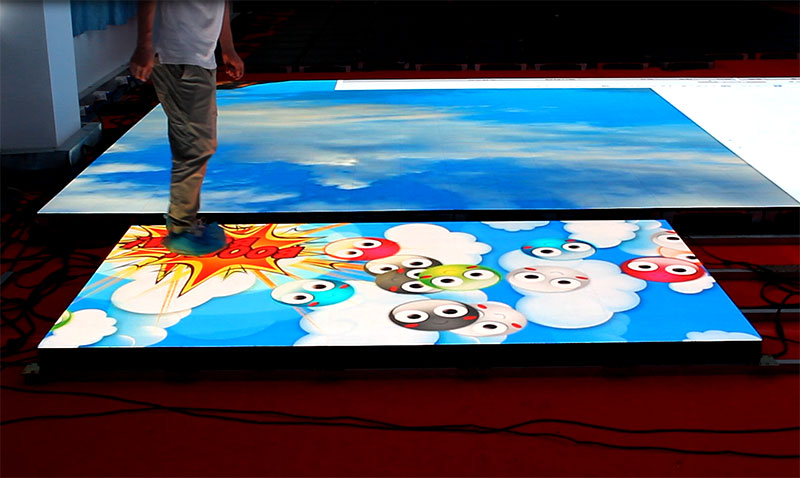Views: 0 Author: Site Editor Publish Time: 2024-06-11 Origin: Site








The environmental friendliness of LED floor factories depends on various factors, including their manufacturing processes, materials used, energy consumption, waste management practices, and adherence to environmental regulations. Here are some ways LED floor factories can and do strive to be environmentally friendly:
1. Energy-Efficient Manufacturing
LED Technology: LEDs are inherently energy-efficient compared to traditional lighting technologies, consuming less power and generating less heat.
Energy Management: Factories can implement energy-efficient practices and technologies, such as using renewable energy sources (solar, wind) and energy-efficient machinery and equipment.
2. Sustainable Materials
Recyclable Materials: Using recyclable materials like aluminum for frames and housing helps reduce waste and supports circular economy principles.
Eco-Friendly Components: Choosing environmentally friendly materials for PCBs, protective coverings, and encapsulation can minimize environmental impact. For example, using non-toxic, recyclable plastics and avoiding hazardous substances.

3. Waste Management and Recycling
Recycling Programs: Implementing comprehensive recycling programs for materials such as metals, plastics, and electronic components helps reduce waste.
Waste Reduction: Adopting practices to minimize waste generation during the manufacturing process, such as optimizing material usage and reusing scrap materials.
4. Adherence to Environmental Regulations
RoHS Compliance: Ensuring products comply with the Restriction of Hazardous Substances (RoHS) directive, which limits the use of specific hazardous materials in electronic products.
WEEE Directive: Complying with the Waste Electrical and Electronic Equipment (WEEE) directive, which mandates the collection, recycling, and recovery of electronic products.
5. Sustainable Packaging
Eco-Friendly Packaging Materials: Using recyclable, biodegradable, or reusable packaging materials to reduce environmental impact.
Minimizing Packaging Waste: Designing packaging to use minimal material while still protecting the products effectively.
6. Efficient Logistics
Optimized Transportation: Reducing carbon footprint by optimizing transportation routes and using eco-friendly transportation methods.
Local Sourcing: Sourcing materials locally where possible to reduce transportation emissions and support local economies.

7. Environmental Management Systems
ISO 14001 Certification: Implementing an Environmental Management System (EMS) in line with ISO 14001 standards helps factories manage their environmental responsibilities systematically and continuously improve their environmental performance.
8. Product Longevity and Lifecycle Management
Durable Products: Manufacturing durable LED floors that have a long lifespan reduces the need for frequent replacements, thereby minimizing waste.
End-of-Life Management: Offering take-back or recycling programs for products at the end of their lifecycle to ensure responsible disposal and recycling.
LEDCOMS: Prioritizes energy-efficient technologies and sustainable waste management practices, including recycling and waste reduction initiatives.
LED floor factories can be environmentally friendly by adopting sustainable practices in their manufacturing processes, using eco-friendly materials, managing waste effectively, and complying with environmental regulations. As awareness and demand for sustainable products grow, many LED floor manufacturers are increasingly incorporating these practices to reduce their environmental impact and contribute to a more sustainable future. When selecting an LED floor supplier, it's beneficial to consider their environmental policies and practices to ensure they align with eco-friendly principles.